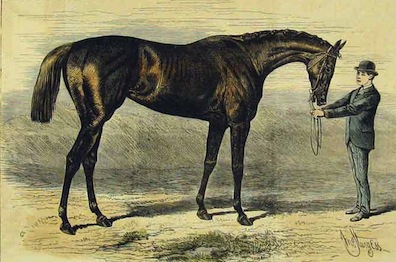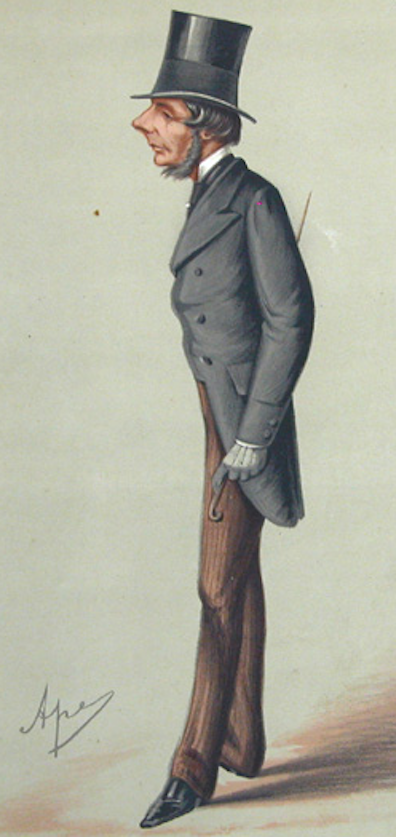As Deasy sits typing his magisterial letter to the editor and
reading aloud from it, Stephen takes a seat "before the
princely presence" of Albert
Edward and surveys the framed "images of vanished
horses" that grace the walls. Three are named: "Repulse," who
won a race at Newmarket, England in 1866; "Shotover," who won
five races starting in 1882 and nearly claimed the English
Triple Crown; and "Ceylon," who did in fact win the Grand
"prix de Paris, 1866." Stephen thinks again of the Prix
de Paris near the end of Proteus.
The text places Stephen in two kinds of relationship to these
British thoroughbreds. He lets his mind drift in fantasy to a
racetrack where "Elfin riders," i.e.
featherweight jockeys, sit atop their mounts "watchful
of a sign." He imagines himself seeing "their
speeds" once the race has begun, and shouting along
"with the shouts of vanished crowds." But at
the same time Stephen is sitting "noiselessly"
in Deasy's office, looking at the static portraits of equine
elegance, and a portrait of the English king, and his Unionist
employer. The horses themselves seem to be silently
contemplating their lords and masters "in homage,
their meek heads poised in air."
Gifford notes that Albert Edward "was an ardent horse
fancier," and that the horses displayed on the walls of the
study implicitly associate Deasy with "Nestor, master charioteer." The
narrative also explicitly identifies the owners of the three
horses as lords (a marquis and two dukes), so we have in sum a
collection of five princely presences before whom
the shabby Stephen may wish to humble himself in homage.
Thornton supplies details about the owners, as does Gifford.


